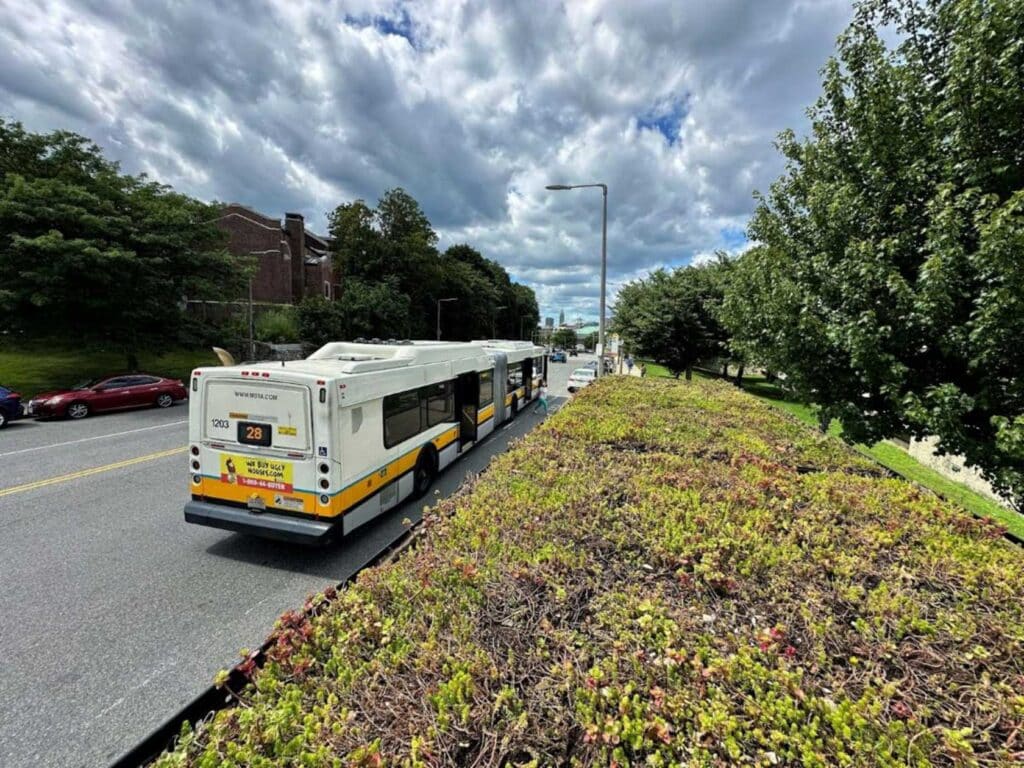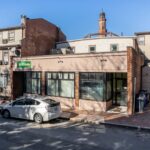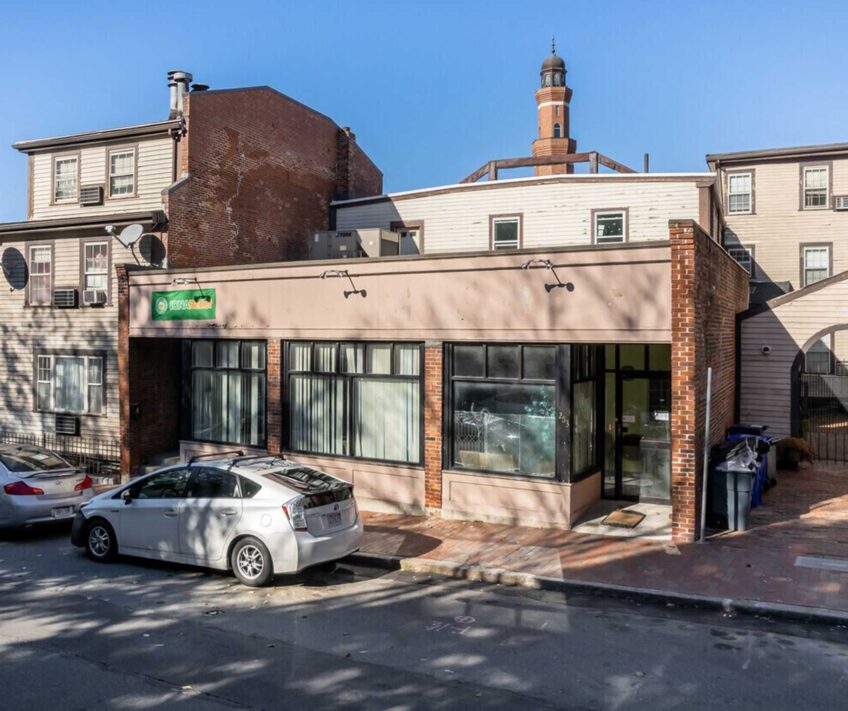
For riders of the number 28 bus, the journey will be a little cooler, especially on hot summer days, through a new city initiative installing plant-filled coverings — green roofs — on bus shelters along the route.
The shelters come as part of a push to increase green infrastructure — plant- and nature-based solutions to climate challenges — across the city.
“It’s a way that we can help introduce many benefits to cool our city, to help keep our streets free of flooding and overall increase quality of life,” said Zoe Davis, senior project manager for climate resilience with the city.
This month, through the project, the city announced the installation of new plant-filled roofs over the existing structures of 30 bus shelters along the 28 bus route, which cuts from Mattapan Station through Dorchester and Roxbury to Ruggles Station.
Davis said the city thinks the green-roof installation is one of the largest efforts of its kind — perhaps the largest — in the United States to date. (Similar or larger efforts are already underway in Europe).
City officials expect the retrofitted shelters to provide cooling in three different ways. In perhaps the most immediate, the green roofs now cover the glass roofs that are the default design for the shelters. The increased shade the roofs provide will cut down the heat community members feel through air temperature and direct sun exposure.
Increased greenery can also help to reduce heat island effects — where sunlight warms heat-absorbent materials like asphalt and concrete, which then retain that heat past midday and even into the night.
As plants release water, they also cool an area. Through a process called transpiration, water that has moved through a plant is released through its leaves — effectively its version of sweating. The evaporating water lowers temperatures around the plant.
Multiple benefits
These cooling effects are supplemented by benefits relating to stormwater retention. Davis said the 30 new roofs are estimated to capture about 1,500 gallons of water over the three years they’re slated to be in use — and provide some new support and habitat for pollinators like bees, birds and butterflies.
“We’re hitting a lot of co-benefits with this project,” she said.
The city identified green roofs at bus shelters— along with other cooling measures like fans and misting — as a “catalytic project” in its 2022 heat resilience plan.
Those catalytic projects were intended to be a starting point, something the city could do shortly after the report was released.
“The goal here is for the heat plan to not only just be our framework, but we’re looking to address some immediate impacts of extreme heat,” Davis said. “One of the ways that we wanted to do this was looking at our transportation infrastructure, addressing the fact that many commuters don’t have shade when they’re going into work or wherever they’re traveling.”
The effort follows a pilot program from 10 years ago, run by Social Impact Collaborative with Weston Nurseries, as is the current green roof project. That one was more limited, and only ran over one summer, Davis said, in large part due to complications around maintenance costs.
This time around, maintenance was built into the contracts the city signed. That sort of change is part of a push to make programs like this more effective and sustainable in the long term as the city looks to expand its green infrastructure offerings across the city.
For example, the city has installed new rain gardens in Nubian Square. At Harambee Park, along Blue Hill Avenue, they added a constructed wetland. The South End’s Harrison Avenue has new permeable pavers that allow more absorption of rain. Along New England Avenue in Dorchester, the city dug bioswales — plant-filled trenches to collect and move stormwater.
Regionally, other efforts are focused on green infrastructure projects and pushes to cool active transportation like walking, biking, and taking the bus.
In Boston, Davis has been involved with a few other projects involving green infrastructure, too.
She has worked to support the city’s Roxbury Resilient Corridors project, which includes new street trees and plantings to cool the area and address stormwater concerns along Malcom X Boulevard, Warren Street and Melnea Cass Boulevard.
She’s also involved with an effort to “cap” part of Interstate 90 where it cuts through downtown, cutting Chinatown off from the South End and the Leather District.
Targeting affected communities
Through it all, Davis said, the city’s priority is on parts of the city that have long seen increased impacts from climate change.
“We know that communities of color, among other socially vulnerable populations within the city, have experienced a history of disinvestment,” Davis said. “It has shaped the way that people experience extreme heat through the built environment, the way that policies have formed the built environment and the way that people are able to access resources to stay cool.”
That mindset is part of why the 28 bus route — which runs through three different communities of color and census tracts that are exclusively designated as environmental justice communities — was selected for the green roofs. Davis said it was also chosen for its high ridership and the fact that it’s one of the three bus routes made free through city subsidies.
And she said she hopes these 30 bus shelters won’t be the end of the effort in the city, but that instead, the information gathered over the next three years will help make the case that these should be part of the standard design for bus shelters in the city.
“This is sort of our test run to say, ‘Hey, we know that these work. They work in similar climates across the globe,’ and trying to understand how we may be able to implement these further in Boston,” Davis said.
Now is the moment for that work, she said. The contract the city holds with a vendor to manage its “street furniture” — things like bus shelters, as well as benches and informational signs — is set to expire in 2026. Currently, it is held by JCDecaux.
“There really is an opportunity to ensure through procurement and through contracting, that we’re really embedding climate resilience into our street furniture,” Davis said.
A push for broader efforts
But in some parts of the city, community members want to see green infrastructure efforts come as part of more comprehensive strategies for individual communities.
In Grove Hall, Ed Gaskin, executive director of the area’s Main Streets organization, has been an advocate for local green infrastructure efforts like bolstering greenery in the medians along Blue Hill Avenue. In his eyes, projects like the work on the medians or the green roofs on the bus shelters are a start, but don’t manage to get to the core of the issue.
“Without an overall plan, you just have a bunch of one-off stuff,” he said. “One-off is better than nothing, but at the end of the day, the greening of the bus shelters isn’t going to make that much of a difference.”
To really address the area’s needs, he wants to see “green zone” audits and analyses by a governmental entity — he envisions the state — to look at the environmental needs and situation of a neighborhood to be able to better divvy up funding and address issues.
“We felt that there needed to be a more systematic way of looking at what the needs in the community were from an environmental standpoint. Having inventory of those needs and then being able to move forward … understanding that a neighborhood like Grove Hall should be receive higher priority than Nantucket.”
To get at addressing those specific needs, Gaskin wrote proposed legislation that was filed at the State House in March 2023. That bill would have created a state process to establish “green zones,” areas that would have a specific zone-wide plan for how to address environmental needs in the vicinity.
The bill never received a hearing and wasn’t passed before the end of the legislative session in July. Gaskin said he hopes to see the legislation refiled in the next session.
At the heart of it, for him, is an equity-rather-than-equality standpoint, looking to prioritize neighborhoods like Grove Hall that tend to see increased impacts and harms from environmental hazards.
A report published in May by Gaskin’s Greater Grove Hall Main Streets organization pointed to disparities in the presence of dark, impervious surfaces that can increase heat island effects and limit stormwater drainage, as well as more limited tree coverage and other greenery.
He compared installing green infrastructure across the city to putting a shirt through the wash — effective at an overall clean, but potentially unable to appropriately address a specific spot where there’s a stain.
“If you have a neighborhood like Grove Hall or something, and that’s the spot, then it needs concentrated effort to get the stain out, not just the same effort that the other neighborhood — the rest of the shirt — needs,” he said.






